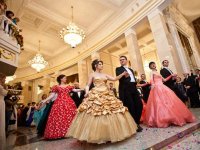Metodological Notes
METHODOLOGICAL NOTES
Tourist is an individual who makes a tourist journey for the period exceeding 24 hours or the one who has at least one overnight stay in the country (place) of temporary residence.
Organized tourist is an individual traveling on tours bought from organisations engaged in tourist activities.
Tourist activities refer to the activities of tour operators and tour agents.
Tour operator activity is entrepreneurial activity of legal persons (tour operators) related to arranging, promotion and selling tours, including tours arranged by other tour operators, including non-residents of the Republic of Belarus, as well as to providing selected travel-related services.
Tour agent activity is entrepreneurial activity of legal persons or individual entrepreneurs (tour agents) related to promotion, selling tours arranged by tour operators that are residents of the Republic of Belarus, to the participants of tourist activities, as well as to providing selected travel-related services.
Tourist accommodation facilities refer to organisations (hotels, motels, campings) that provide tourists and other individuals (who arrived with business or commercial purpose, at personal invitation, or for other reason) with temporary residence.
Accommodation capacity of a facility (number of places) is defined by the number of permanent beds. The indicator does not include temporary (additional) places and permanent places in the rooms occupied for longer periods and paid for according to different rate.
Sanatorium and health-resort organisations are organisations that provide sanatorium and health-resort services and are located in health resorts or areas having curative and health improving effect.
Health improving organisations are organisations providing health-improving services for adults, children, or adults and children.
Health improvement is a complex of measures aimed to increase the resistance to physical, biological, psychological, and social factors of the environment in order to enhance human health.
Tourist and excursion services include services provided to citizens of the country in the territory of the Republic of Belarus.
The volume of tourist and excursion services includes cost of tours on intra-country tourist routes, cost of foreign tours, and cost of excursion services to population.
Tourist resources are natural, historical, and socio-cultural sites, including objects for tourist demonstration, as well as other properties able to satisfy spiritual needs of tourists and making for the restoration and enhancement of their health.
Museum is a cultural and educational institution carrying out research and educational activities, the main objectives of which refer to identification, accession, inventory, storage, study and promotion of cultural valuables and / or unique natural sites distinguished from the environment as a result of research activities in order to ensure public accessibility of national and world cultural values and their use for intellectual and cultural development of the society, including dissemination of knowledge on the environment, history, and culture.
Motion picture (video) installation is a complex of equipment for the demonstration of motion picture (video) films. Installations are subdivided into stationary, with apparatus permanently assembled in a specially equipped room, and mobile, with apparatus installed only for the show time. State statistical reporting cover installations operating with ticket sales.
Cinemas are organisations with stationary motion picture installations assembled in halls that are equipped with seats and are not used for other purposes.
Video halls are equipped with stationary video projecting television apparatus for collective film viewing.
Video clubs provide simultaneously a complex of services, i.e. viewing a film in the video hall, individual viewing of a video cassette in a cabin, and renting video cassettes and television apparatus.
Theatres, concert organisations, circuses are cultural organisations carrying out cultural activities through the arrangement, staging, and demonstration of performances, concerts, or other public events.
State statistical observation covers professional theatres. Professional theatre (studio theatre) is a creative team of theatre arts comprising a professional company. The network of professional theatres includes opera and ballet, drama, musical, children’s and youth theatres. Data on theatres do not include folk and amateur theatres.
Concert organisation is a cultural organisation engaged in the arrangement of concert activities (philharmonic hall, concert association, concert hall), or an independent team (musical, choir, dancing, etc.) that keeps a separate balance and is a legal person.
Circus is an entertaining organisation housed in a building with arena (manege), where circus performances take place, and with a continuously changing company of circus artists.
Club institution is a cultural organisation performing its educational and entertaining function through the provision of natural persons with favourable conditions to practice folk and creative arts and to satisfy their demand for knowledge, self-learning, spiritual and physical development, as well as their need for interpersonal relations and recreation. Club institutions comprise clubs, palaces (houses, centres) of culture, centres (houses) of folk arts (folklore), centres (houses) of crafts, cultural centres for youth, centres of national culture, etc.
State statistical observation covers club institutions permanently housed and providing the necessary conditions for cultural public activities.
Public library is a generally accessible library providing service to all population groups of the region and satisfying their general educational, professional and cultural demands based on the universal library stocks.
Organisations, educational and other institutions have scientific, educational, technical and other specialized libraries. State statistical observation covers public libraries.
Physical culture and sports facilities are projects to be used in practicing physical culture or sports.
Specialized educational and sports institutions are organisations, the activity of which refers to training sports reserve and/ or top class sportsmen.
Household is a person or a group of persons sharing the budget and the residence, ties of relationship being not mandatory.
Data on money expenditure on sanatorium, health resort, tourist and excursion services and services of cultural institutions are based on the household sample survey results. The survey is conducted in all regions of the country and in Minsk City, and covers about 6000 households yearly.
Disposable resources are money resources of households, value of consumed foods produced in personal subsidiary plots less the material expenses on their production, and the value of in-kind benefits and subsidies obtained.
To study the inequality pattern of wealth distribution among population (households), the grouping method is applied, when all population (households) are grouped in equal quintiles (deciles).
When arranging quintiles, population (households) is ranked in an ascending order by the level of per capita disposable resources, and then is divided into five equal groups, each of them comprising 20 percent of population (households). As a result, the first (lowest) quintile refers to 20 percent of population (households) with the lowest per capita disposable resources, the second quintile – to further 20 percent of population (households), while the fifth (highest) quintile comprises 20 percent of population (households) with the highest per capita disposable resources.
Deciles are arranged in the similar way by dividing the ranking into 10 equal groups The book provides data on the number of employees in recreation and tourism, physical culture and sports, culture and arts branches by region and ownership type; on their distribution by gender, age, and educational attainment; and on the nominal gross average monthly wages.
The statistics on employment in the economy and nominal gross average monthly wages are broken down by branches of the economy in accordance with the All-State Classification of Branches of National Economy (OKONH).
Population employed in the economy are individuals who work under labour contracts and civil law contracts for whom this work is the only work, individual entrepreneurs; individuals who provide services in the field of rural eco-tourism; the ones engaged in craft activity; individuals involved in work (assistance) in commercial organisations of their relatives, persons engaged into production for sale at their personal subsidiary plots for whom that work is the main work.
Number of the employed in the economy (is calculated as an average annual value). Data on the distribution of employees by gender, age and educational attainment are based on the payroll number of employees of organisations as of the end of the year.
Payroll number of employees comprises workers who concluded labour contracts and performed permanent, temporary, or seasonal work. The number includes both those who actually worked, and those who where absent from work for any reason (labour leave, leave on employer’s initiative, temporary disability, etc.). The number does not include external multiple job holders and persons who worked under civil law contracts.
The number of employees is broken down by educational attainment irrespective of the work done or position held. Educational attainment of an employee refers to the highest level of an educational establishment the employee graduated from.
Unemployed registered with agencies for labour, employment and social protection are able-bodied persons at working age who permanently reside in the territory of the Republic of Belarus, do not have any work or earnings, are registered with agencies for labour, employment and social protection at the place of their permanent residence with the purpose to find an appropriate job, are looking for a job, and are ready to start working.
Nominal gross average monthly wages are calculated by dividing gross wage fund, including income tax and compulsory insurance contribution of an employee, by the average payroll number of employees taken to calculate the average wage, and by the number of months in the period.















